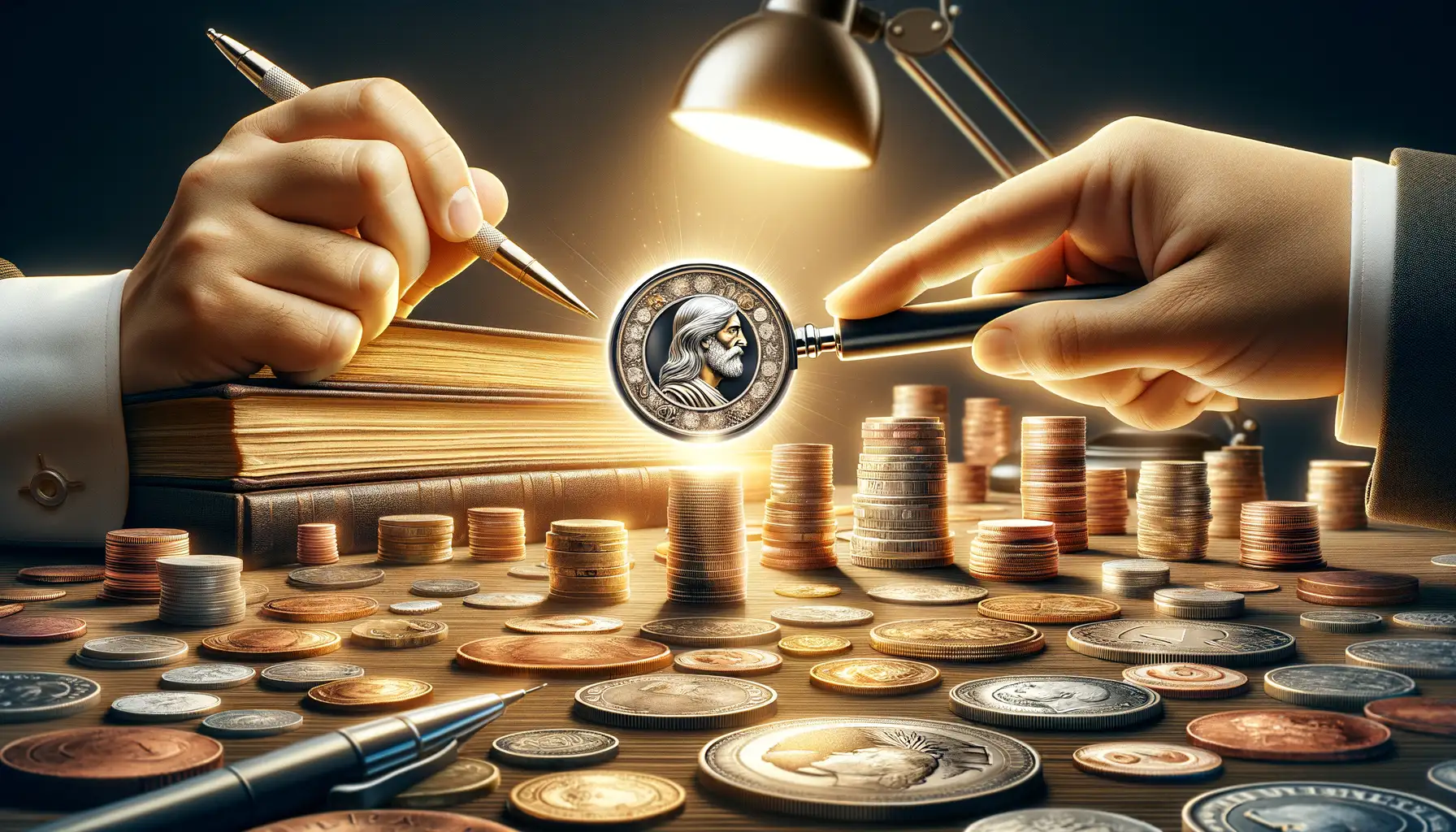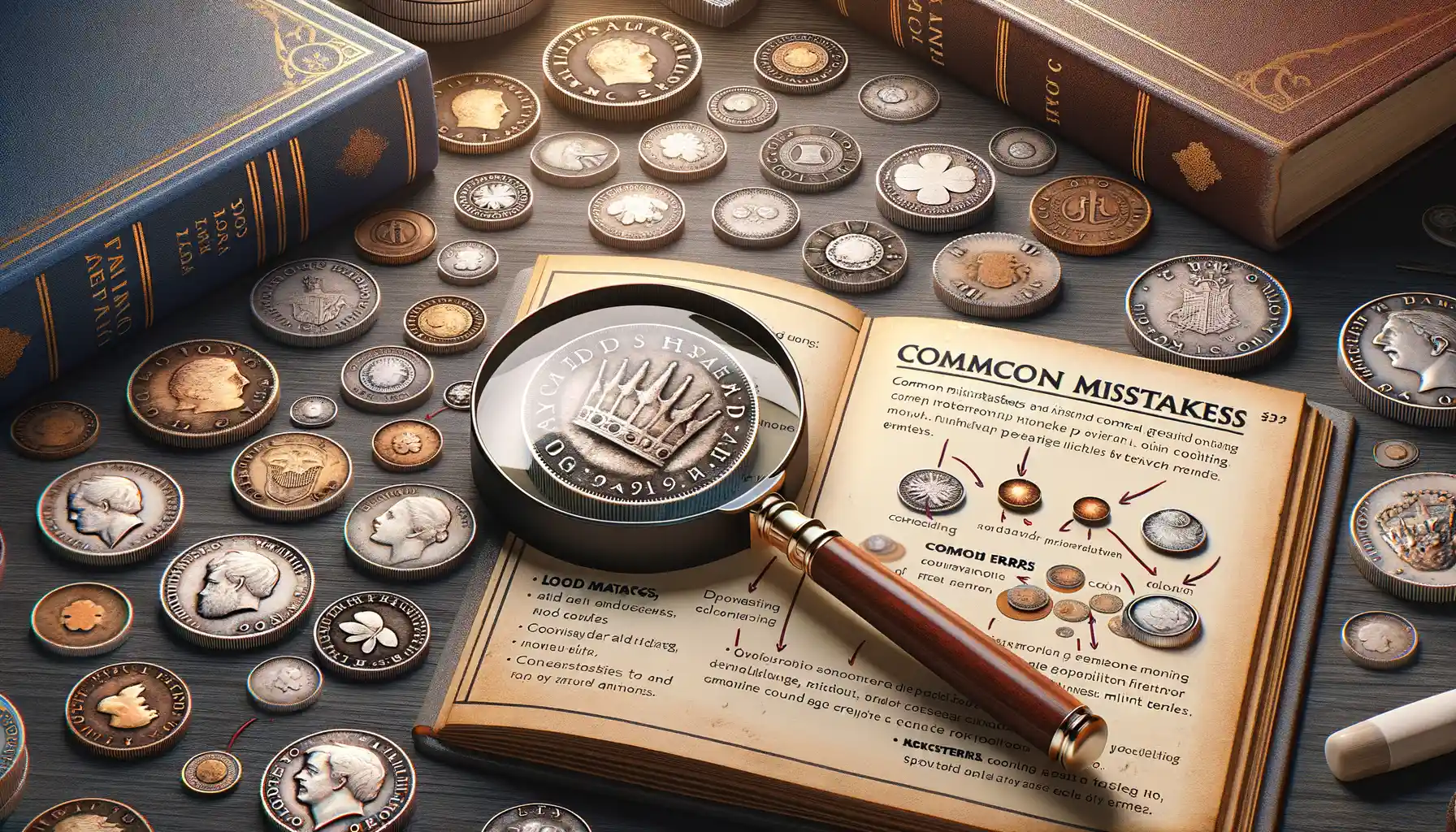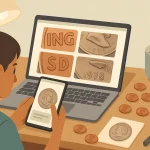What is Coin Grading and Why Does it Matter?
Peering Into the Soul of a Coin
Imagine holding a coin in your hand—a tiny slice of history, heavy with stories and mystery. But how do you *really* know its worth? That’s where coin grading swoops in, like a detective lens for numismatists (that’s a fancy word for coin collectors like you). Simply put, it’s the process of evaluating a coin’s condition and assigning it a grade based on factors like wear, luster, and appeal. Sounds simple enough, right? Not quite.
Coin grading doesn’t just stop at “good” or “bad.” It dives deeper, sorting coins into nuanced categories like “Extremely Fine-45” or “Mint State-65.” These grades, often determined by reliable organizations like PCGS or NGC, can swing a coin’s value by hundreds—or even thousands—of dollars. It’s not just condition; it’s about trust, precision, and unlocking a coin’s hidden potential.
- A higher-grade coin often means a better-preserved piece of history.
- Grading ensures buyers and sellers speak the same language—no guesswork, no disputes.
- It protects your investment, whether you’re building a collection or just starting out.
So, why does it matter? Because in the world of coins, knowledge is power, and grades are the gateway.
The Fundamentals of the Coin Grading Scale

Breaking Down the Magic Numbers: What the Coin Grading Scale Means
Imagine holding a piece of history in your hand—a coin from centuries past. Now imagine trying to measure its worth. That’s where the coin grading scale swoops in like a trusty guide, cutting through the guesswork. Think of it as a report card for coins, with grades ranging from a perfect “mint state” 70 to a barely recognizable, well-loved 1. Every number tells a story.
Here’s the gist: the higher the grade, the sharper the details, and the fewer the imperfections. A coin graded MS-70? That’s the holy grail—flawless under magnification. But an AU-58 (Almost Uncirculated) still whispers tales of gentle circulation. And don’t underestimate “Good” or even “Fair” grades; they carry their own rugged charm!
- 60–70: Mint State (MS) – Coins that never made it to pocket jingles.
- 50–59: About Uncirculated (AU) – Slight wear, but oh-so-close to pristine.
- 1–49: The spectrum of circulated coins, each showing the passage of time differently.
Understanding these numbers transforms a pile of metal discs into a world-class treasure hunt! Each grade is a window to the past—unlocking value, rarity, and beauty, all preserved in glorious detail.
How Professional Coin Grading Services Work

Peek Behind the Curtain: The Grading Process Unveiled
Ever wonder what actually happens when you send your prized coin off for grading? It’s a fascinating combination of science, art, and precision. Picture this: your cherished coin enters a high-security facility, where meticulous experts armed with magnifiers and microscopes await. These professionals, often with decades of experience, assess every curve, edge, and gleam of your coin under specialized lighting.
First, your coin is authenticated to verify it’s the real deal—no knockoffs or counterfeits allowed here. Next, the graders evaluate its condition using the industry-standard Shelton Grading Scale. They scrutinize every detail: Is there wear on the high points? How crisp are the mint marks? Even the tiniest flaw speaks volumes about its journey through time. Then, multiple graders independently assign scores to avoid bias—a system built like a checks-and-balances masterpiece.
Finally, your coin is sealed in a tamper-proof holder—a sleek little fortress called a slab. Not only does it preserve your coin, but it also showcases its grade for all to see. And voilà! Your coin’s history is now fully documented, protected, and worth its weight in gold—or, well, silver.
Tips for Evaluating and Understanding Your Coins

Unlocking the Story Behind Your Coins
Every coin has a tale to tell, but understanding its value starts with knowing what you’re holding. Is that old silver dollar just pocket change, or a hidden gem? To uncover its secrets, start by examining its key features. Look closely—no, really get up close—and notice details like its mint mark, date, and design quirks. These tiny nuances can turn a seemingly ordinary coin into something extraordinary.
But here’s the catch: not everything is about age. Don’t assume older means more valuable! For example, a shiny 1964 Kennedy half-dollar might be worth more than a worn-out coin from the 1800s. Why? Because condition and rarity reign supreme in the world of coins.
- Check its surface under good lighting. Lustrous, intact surfaces often spell value.
- Hunt for errors—those odd imperfections like doubled letters or off-center strikes can ignite collector excitement.
- Handle it carefully. Fingerprints are no friend to delicate finishes!
Coins are time travelers, linking us to history. When you hold one, you’re holding a piece of someone’s story. Treat it as such, and you’ll see its value in ways beyond numbers.
Common Mistakes and Misconceptions in Coin Grading

Overestimating or Underestimating Coin Grades: A Common Trap
Ever looked at a coin and thought, “This must be worth a fortune!”—only to find out later it doesn’t quite make the grade? Let me tell you, one of the most significant pitfalls in coin grading is letting emotions cloud judgment. It’s easy to overestimate a coin’s grade because it’s been passed down through generations or carries sentimental value. On the flip side, some collectors underestimate their coins, dismissing slight flaws that grading professionals might overlook entirely!
Remember, grading isn’t just about how shiny or pretty a coin looks; it’s a precise evaluation of *wear, luster*, and other intricate details. For instance, a Morgan silver dollar with minor marks may still score a solid MS-63 if those marks are in non-focal areas.
- Thinking older equals better: Age alone doesn’t guarantee value. An 1800s penny in poor condition could fetch less than a modern mint-state coin.
- Ignoring grading standards: Each coin series has nuances—what’s acceptable wear on one may not apply to another.
Keep your eyes sharp and your biases in check—grading is as much science as it is art.




